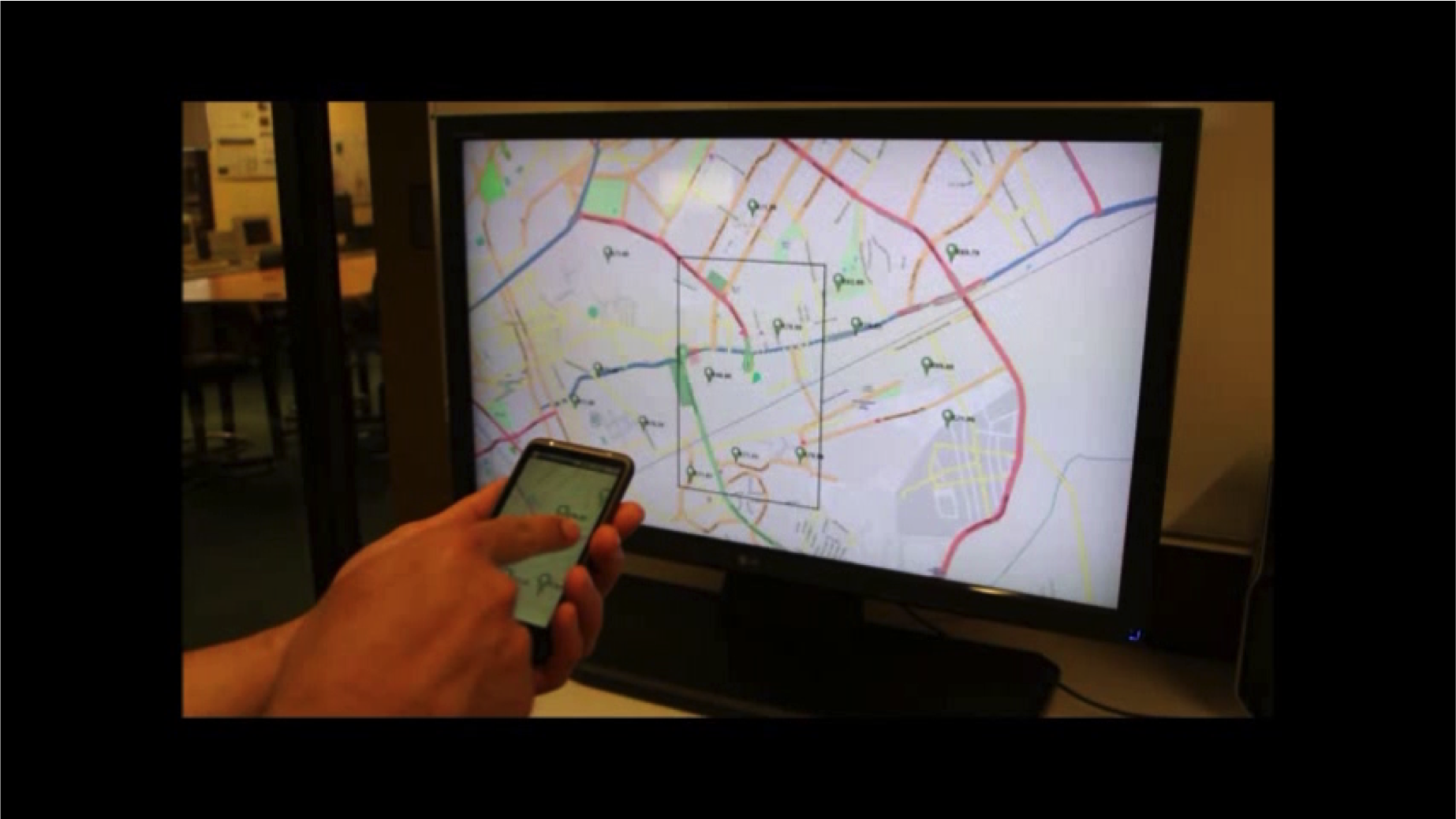Pervasive-Displays
Aaron Quigley, Miguel Nacenta and Others
Overview
Pervasive Displays refers to the growth in the availability of displays in a broad and diverse spectrum of sizes, input/output capabilities, resolution, power usage and portability. This can include coupled and un-cordinated displays, on and around the body or displays in the environment. Personal, shared, public and semi-public displays can all be considered as part of a larger display ecosystem which surrounds some people in their daily lifes.
When considering a single display, its form factor typically defines its social affordances. A handheld display is comfortably visible by one user (or few) at a time; a large wall display is visible by multiple users simultaneously and an interactive multi-touch surface affords the simultaneous interaction by many people. A display device’s physical constraints, such as real estate, orientation and mass, strongly affect the social context of interaction it supports and this is further constrained by the users’ visual angle, territoriality, and capability to reach content and manipulate the display device.
Pervasive Displays which consist of coordinated multi-display environments from the desktop, second-screen to gigapixel display walls are increasingly common. Personal and intimate display devices such as head-mounted displays, smartwatches, smartphones and tablets may become part of such body proximate display environments in the future. Such display environment can be formed by combining multiple hand-held, head-mounted, wrist-worn or other personal or appropriated displays.
In SACHI we have been exploring “Pervasive Displays”, in various guises since the founding of the group. This has ranged from ecosystems to display switching or body proximate to ongoing challenges.
Videos
Publications
A. Quigley and J. Grubert. Perceptual and Social Challenges in Body Proximate Display Ecosystems. In Proc. MobileHCI ’15 Adjunct. ACM (Ed.) DOI: 10.1145/2786567.2794349 (to appear)
Aaron Quigley, Matthias Kranz, and Jens Grubert. 2015. Design and Technology Challenges for Body Proximate Display Ecosystems. In MobileHCI’15 Adjunct, ACM (Ed.). DOI: 10.1145/2786567.2794310 (to appear)
Grubert, J, Heinisch, M , Quigley, AJ & Schmalstieg, D 2015, MultiFi: multi-fidelity interaction with displays on and around the body, in Proceedings of the SIGCHI conference on Human Factors in computing systems. ACM Press – Association for Computing Machinery, 26th Annual CHI Conference on Human Factors in Computing Systems, Seoul, South Korea, 18-23 April. (Open Access) DOI: 10.1145/2702123.2702331
Elhart, I, Heikkinen, T & Quigley, A 2014, Pervasive displays 2014, IEEE Pervasive Computing , vol 13, no. 4, pp. 59-63. DOI: 10.1109/MPRV.2014.71
Rashid, U , Nacenta, MA & Quigley, A 2012, Factors influencing visual attention switch in multi-display user interfaces: a survey , in Proceedings of the 2012 International Symposium on Pervasive Displays. PerDis ’12, ACM, New York, NY, USA, pp. 1:1–1:6 (Open Access) DOI: 10.1145/2307798.2307799
Rashid, U , Nacenta, MA & Quigley, A 2012, The cost of display switching: a comparison of mobile, large display and hybrid UI configurations, in Proceedings of the International Working Conference on Advanced Visual Interfaces. AVI ’12, ACM, New York, NY, USA, pp. 99–106. (Open Access) DOI: 10.1145/2254556.2254577
Terrenghi, L , Quigley, A & Dix, A 2009, A taxonomy for and analysis of multi-person-display ecosystems, Personal and Ubiquitous Computing, vol 13, no. 8, pp. 583-598. DOI: 10.1007/s00779-009-0244-5





